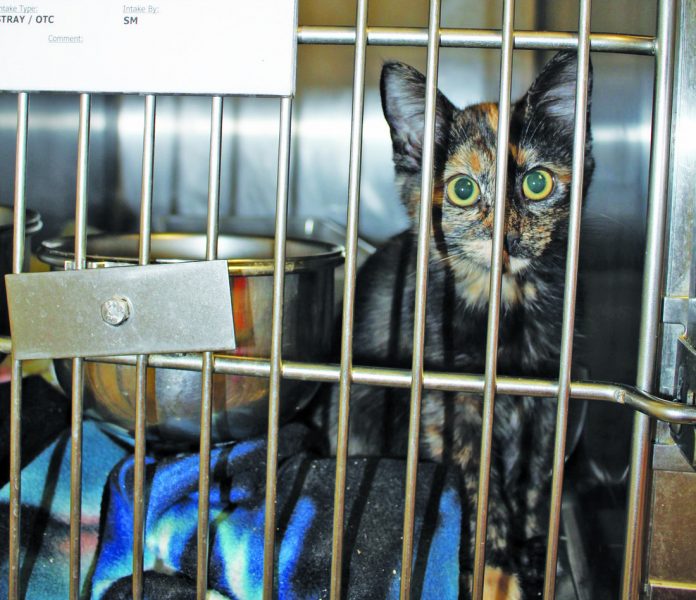
The Hollister Animal Control Bureau euthanized 1,411 animals last year, nearly half of what it impounded, according to a report by the San Benito County Civil Grand Jury.
Last week, the Hollister City Council approved the city’s response to the annual report, which also included findings on the county jail and juvenile hall. The grand jury is made up of 19 citizens interested in improving the effectiveness of county agencies, special districts and public individuals. Each grand jury serves for one year.
The animal shelter, which serves both the City of Hollister and San Benito County, took in 2,945 animals in 2016. Of that, only 274 animals were adopted by the public. However, 519 animals were taken in by rescue groups.
The 1,411 euthanizations averaged 118 animals a month with five officers able to conduct the procedure. Feral cats that were captured or brought in by the public accounted for nearly 1,132 of the animals euthanized.
The grand jury outlined a number of concerns: the emotional toll euthanization takes on the officers who have to perform the procedure, the lack of a veterinarian to euthanize the animals and an animal behaviorist on staff, the low number of adoptions compared to the number of animals received into the shelter and the amount of drugs administered during euthanization.
All officers employed at the shelter must perform euthanasia and must complete training and receive certification.
The grand jury recommended a veterinarian perform the procedure, however, the city responded that the cost—$100 to $150 per animal, depending on weight—would be an added financial burden to an agency that is already under pressure by the county to reduce costs. Having a veterinarian perform all the procedures last year would have increased the cost of euthanasia from $1,565.87—the cost of the drugs—to $141,100 to $211,650.
The euthanasia drug, called Fatal Plus Solution, is purchased from a licensed county veterinarian. Animal control bought enough of the drug last year to euthanize 65,000 pounds of animals.
Of the 1,411 euthanized animals—462 were euthanized for behavior—184 cats, 138 kittens, 139 dogs and one puppy. The animals either failed a behavior test or were euthanized for their behavior history.
The grand jury found that officers without certification were conducting behavior tests and recommended the shelter employ a certified behaviorist. The city agreed with this finding, however, certified behaviorists require a PhD and extensive training and “no training is required to conduct a behavioral assessment on shelter animals.”
The grand jury asked for records of behavior tests but none were given because they were not being kept.
The city agreed with this finding and stated staff has since worked on creating a standard behavioral checklist and records are now being kept.
The shelter keeps animals for a mandatory five days, not including the day they are first taken in at the shelter. If cats are determined to be feral, they can be euthanized immediately.
However, according to the city’s response, the shelter holds animals longer than 10 days or more if there is room and if animals are friendly and healthy. Some animals have stayed at the shelter for several weeks while staff worked to find them forever homes.
The shelter also has an adoption trailer that staff can take out to community events. The city stated because of limited staffing, the trailer was not used as much “as we would like in 2016” but have used it several times this year and there are plans to make it a regular part of community events.
Resident Elia Salinas spoke during public comment and advocated for the city to work with a nonprofit that would establish a no-kill facility. She encouraged city staff and animal control to reach out for grants to fund such a facility.
Councilwoman Mickie Luna agreed with the need to look for grants and suggested it would be wise to conduct a public walkthrough of the shelter.
The grand jury report also suggested the city recruit more volunteers.
Vice Mayor Karson Klauer said it was sad that the grand jury expects volunteers to do a lot of the work.
“We are expecting volunteers to do this out of the goodness of their hearts,” Klauer said. “We probably should not be leaning so much on volunteers that are an important part in what we’re trying to do.”









